The past sixty years or so has seen a growing number of scientists in various fields who accept a young-earth creationist understanding of the history of the universe. These individuals are often called “creation scientists” because they practice “creation science.” However, there are a number of skeptics who disagree, arguing that “creation science” is not really science at all. Why is this? Is this view correct? More importantly, how does creation science even work?
The views expressed in this article reflect those of the author and not necessarily those of New Creation.
What is Science?
To understand what creation science is, we must also understand what science in general is. The difficulty with this is that defining science itself is not as easy as it may appear. This is because there are very few criteria related to science that are unique to it, and not found in other fields of inquiry, such as mathematics, logic, or metaphysics. This dilemma is what Karl Popper and other philosophers have called the problem of demarcation.1
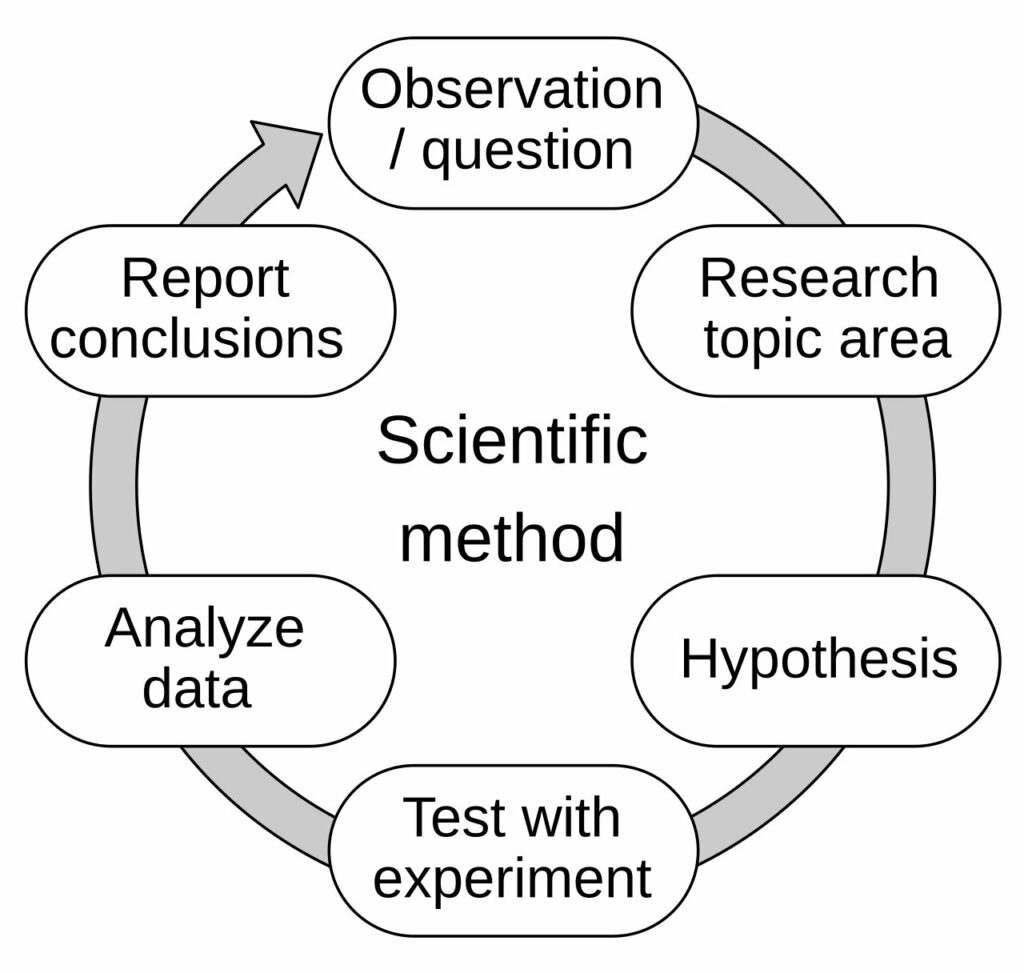
To avoid getting off topic, we can suffice to say what is generally agreed. There is a common idea that science is a set body of information. This is false. Rather, most scientists would view science as an activity or process used to generate that knowledge. They do this by means of proposing hypotheses they can reject or fail to reject by conducting experiments and making predictions about what future discoveries we should make if the hypothesis is correct. This is called the scientific method.
Common Reasons Why “Creation Science is not Real Science”
There are a variety of reasons skeptics of young-earth creationism do not view creation science as a real form of scientific inquiry. We will examine the most common ones below. As you will see, many of these reasons are due to gaps in the knowledge of skeptics who are not at all actually familiar with the young-earth creationist viewpoint.
Reason #1: “Creation Science Provides No Testable Claims”
It is true that creation scientists accept certain things by faith that cannot be tested by scientific means. For example, we believe that God created various forms of life. This is not a directly scientifically testable assertion because it was a one-time event that occurred in the past. It should be noted that scientifically untestable assertions are not limited to creationists. Conventional scientists believe that all forms of life evolved from a universal common ancestor that lived billions of years ago. Again, this was a one-time (albeit long-lasting) event that occurred in the past.

That said, the fact that scientists cannot directly test either claim with the scientific method does not prove these claims untestable. Rather, scientists indirectly test these claims by proposing potential implications for what evidence we may expect to find if a hypothesis is correct. For example, if God created distinct forms of life that do not share common ancestry, we would expect to be able to distinguish one “kind” of life from other “kinds” of life. Science cannot tell us whether the God of the Bible created those kinds or technologically-advanced aliens plopped them on earth. However, before beginning this investigation, we can use data provided in God’s Word to predict that distinct created kinds exist, rather than all of life diversifying from a single, common ancestor over time. And then, we can test this hypothesis or prediction by methods of science.
There is a certain level of irony about this common reason for disqualifying creation science as real science. When touted by a skeptic, it is usually followed by a stream of scientific arguments for why the claims of “untestable” creation science are false. In other words, these skeptics claim to have tested “untestable” creation science. By their logic, creation science is testable after all!
Reason #2: “Creation Science Describes Natural History in Terms of Scientifically Untestable, Supernatural Causes”
Skeptics commonly and mistakenly assume that creation scientists appeal to an endless stream of “what-if” and “just-so” scenarios that fall back on miracles and the supernatural. This is demonstrably false. In reality, creation scientists favor explanations that are consistent with known and supported facts and evidence, whether from Scripture or science, and require the fewest assumptions to fill the remaining gaps.
After all, while it is certainly within God’s ability to enact miracles whenever He pleases, this in and of itself is not evidence that He does so. This is not to say that a certain miracle could or could not have occurred, only that we must remain agnostic to such notions unless evidence exists in the positive. The Flood narrative, for example, provides several, clearly demarcated examples of both natural and supernatural phenomena. From the evidence we have, it seems God has a clear preference toward natural phenomena.
Natural Occurrences

For example, God told Noah to build the Ark himself instead of building it for him or even supernaturally gathering the supplies (Genesis 6:14). He also tells Noah to gather the food he, his family, and the animals would eat during the voyage (Genesis 6:21). Likewise, He did not miraculously levitate Noah, his family or the animals throughout the duration, nor did He recreate the animal or plant life destroyed in the Flood (Genesis 7:2-3). Regarding the Flood specifically, Scripture describes two physical sources for the floodwaters that already existed in some capacity (Genesis 7:11). God did not miraculously create water to produce the Flood. He also did not supernaturally remove them, instead using natural processes to make the earth habitable again (Genesis 8:1-3). In addition, there was nothing supernatural about the way Noah used to determine whether any land had become exposed as the floodwaters receded (Genesis 8:6-12).
The best explanation with the fewest number of assumptions for these occurrences is that God accomplished them through natural means. Therefore, we can derive scientifically testable hypotheses for each. For example, one hypothesis we could come up with is that the total number of animal passengers was far less than the total number of species alive today and known from the fossil record. Another is that there is geological evidence for a worldwide, watery catastrophe. We can test this by carefully studying how various geologic formations around the world formed.
Supernatural Occurrences
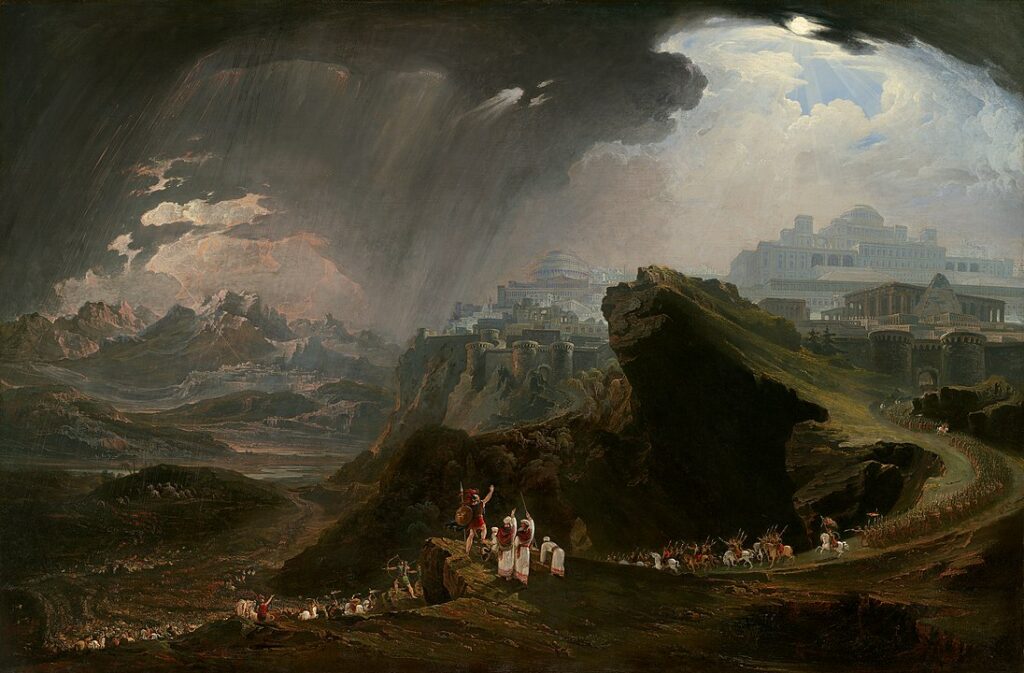
On the other hand, Scripture specifically tells that God brought the animals to Noah so he could bring them onto the Ark (Genesis 6:20). Some Christians have appealed to animal migration instincts as a non-supernatural explanation for how they all got to the Ark from wherever they lived. This overlooks the fact that not all animals have those instincts, and they certainly don’t have the instinct to migrate to a giant man-made boat!
Another example concerns the day the Sun stood still in the time of Joshua (Joshua 10:12-14). Joshua asked this request of God to give his army 24 hours of sunlight to help them defeat their enemy, the Amorites. It is very clear in the text that this would not have happened under regular circumstances. Christians have proposed various natural explanations over the years to explain this phenomenon. They are, however, overly complicated and do not fit the Scriptural evidence.2
The simplest explanation for both of these scenarios are direct, supernatural interventions by God Himself. Because these happen so sparingly throughout the Bible proves additional evidence that they are supernatural exceptions to natural rules by which the universe functions.
Reason #3: “Creation Scientists Start with a Preconceived Conclusion and Force-Fit Data To Confirm It”
A common misconception about scientists is that they are completely objective individuals, wholly unswayed by bias, exempt from the influence of dogma. “Real” scientists simply follow the data where it leads and have no presuppositions or biases which may cloud their judgment. Since creation scientists do not do this (so the claim goes), they are not really scientists.
This reflects a poor understanding of how scientists actually operate. Scientists are not gods. They are human beings. And like every other human being, they can make mistakes, they can misinterpret data, and they can overlook data that they were not looking for.
More specifically, 20th-century American philosopher Thomas Kuhn observed two modes in which scientists go about their investigations: normal science and paradigms.
Normal Science
Normal science is what we generally think of when we hear the word “science.” The “scientific method” detailed above (see “What is Science?”) best summarizes normal science. To recap, the scientific method involves making observations and coming up with ideas about how those observations came to be. Then, we can test those ideas with an experiment or prediction to determine whether or not it is false. Described by Kuhn as “puzzle solving,” we use normal science to answer questions that arise from our investigation of the physical world around us.3

As mentioned above, a good scientific hypothesis is one that can potentially be shown to be false. As such, these ideas are not held to very tightly by the scientific community. In a way, the scientific hypothesis is a bit like a weed. Weeds cannot maintain the status quo for very long. Farmers are always trying to rid them from their fields. Weeds can either die or they can develop immunity to the pesticides farmers spray them with. In much the same way, scientific hypotheses rarely stick around in their original form. Scientists frequently try to disprove existing hypotheses, and oftentimes succeed. A hypothesis can either die or it can modify to account for data inconsistent with its original form.
Paradigms
Kuhn observed that normal science is not the objective, unbiased search for truth. The types of hypotheses scientists entertain are generally restricted in movement by broad, overarching concepts that scientific consensus agrees to be true. Kuhn called these concepts “paradigms,” defining them as “universally recognized scientific achievements that, for a time, provide model problems and solutions to a community of practitioners.” Paradigms are the guardrails of the scientific enterprise. They dictate what data scientists ought to be looking for and the types of questions scientists should ask about that data. They determine what predictions scientists should make and how scientific observations ought to be interpreted.4
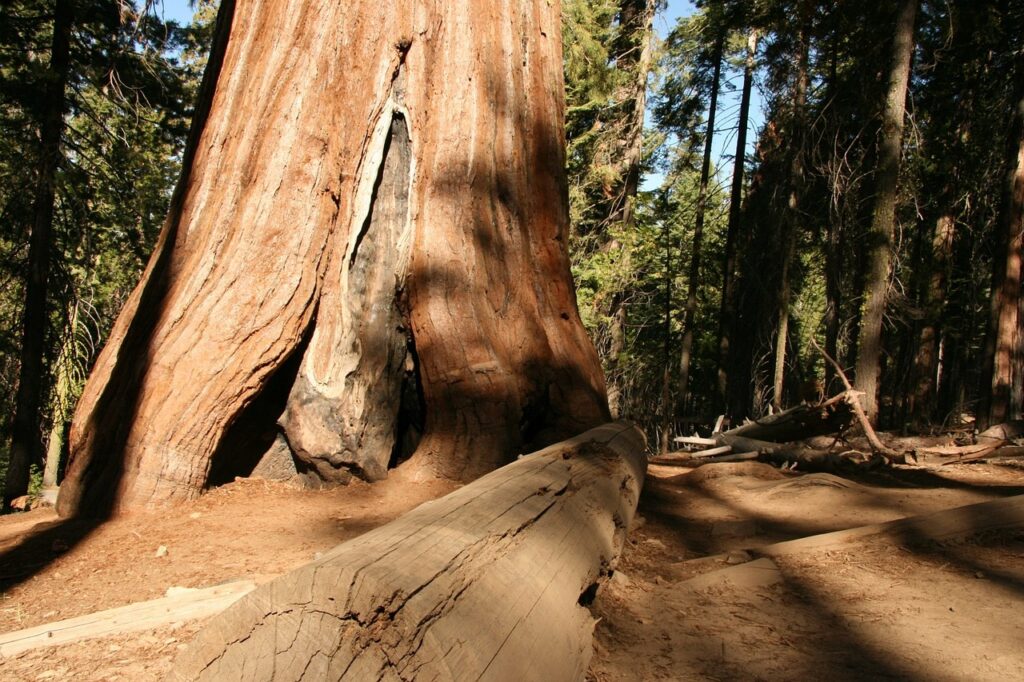
In contrast to the weed-like here-today-gone-tomorrow hypotheses of normal science, paradigms are like redwoods. Once they plant roots and grow to a certain size, uprooting them can be a hassle. Paradigm adherents hold tightly to them. This is because they often have the ability to explain many lines of scientific data very well. As such, they are considered “settled science” and very unlikely to be incorrect. After all, just because a handful of hypotheses relevant to a particular paradigm is false does not mean the entire paradigm is wrong. Because paradigms are so far removed from the raw scientific data, they can be difficult to disprove. They can stick around for a long time. The replacement of one paradigm with another usually results in a long, messy (often generational) process known as a paradigm shift.
How Does a Paradigm Shift Happen?
Example
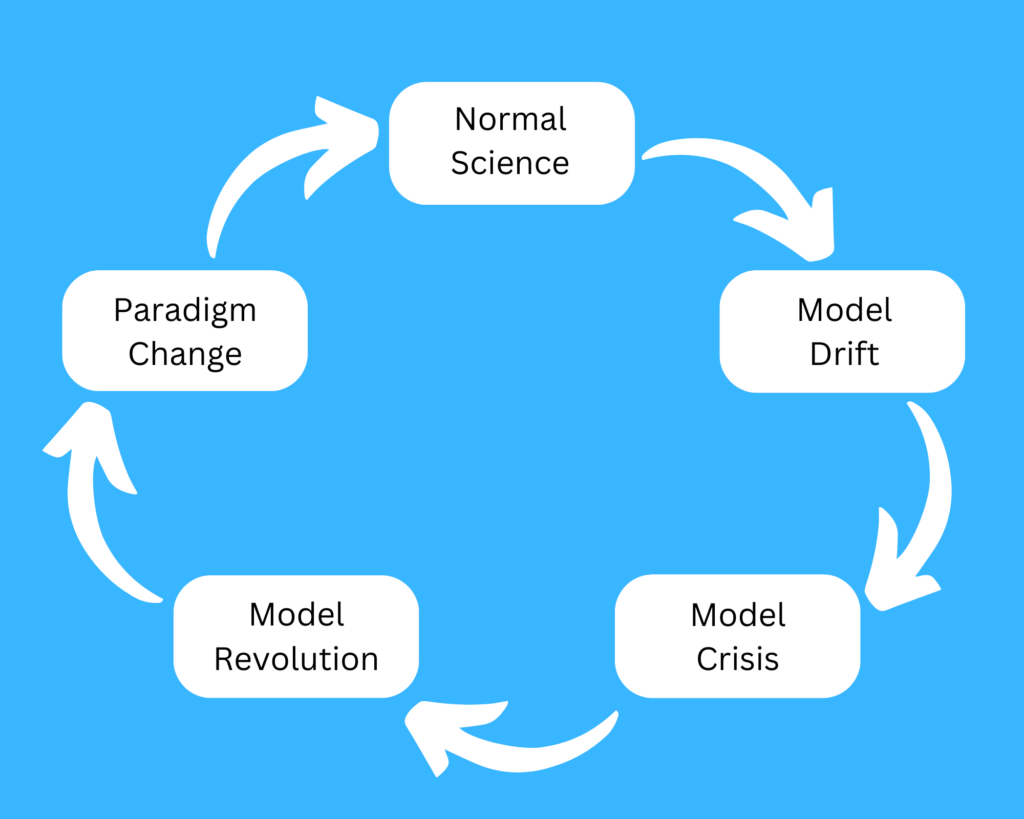
Paradigm shifts do not happen overnight. But when they do occur, Khun recognized that they tend to do so according to a particular sequence of steps. 1) Normal Science is done within the confines of a conventional paradigm. 2) One or more new discoveries generate questions that the conventional paradigm is unable to answer, causing Model Drift. 3) Once these unanswerable questions become too great to ignore, the conventional paradigm experiences Model Crisis. 4) As researchers struggle to explain the data, an alternative paradigm is born, causing a Model Revolution. The scientific consensus often does not immediately accept these new paradigms. 5) Paradigm Change occurs when a few influential researchers accept the alternative paradigm. The alternative paradigm then becomes the new conventional paradigm.
Here is an made-up example to get the point across:
Normal Science

According to the conventional paradigm, a certain species of wading bird has evolved beautiful, scarlet-colored plumage to help it easily keep track of other members of its flock. Scientists apply the scientific method to answer specific questions about what factors may have led this wading bird species to develop their scarlet coloration over time. No one considers the possibility that the starting premise could be incorrect.
Model Drift
One biologist discovers an individual belonging to this wading bird species with brown plumage. After collecting the specimen, he brings it back to his lab and provides the bird with its natural diet of shrimp and crabs. Over the next two weeks, the bird turns from brown to scarlet! The biologist comes up with a hypothesis: the reddish coloration of this bird species does in fact not come from naturally-occurring pigments in its feathers, but from pigments in its diet. Ordinarily, the scientific community would not consider this a worthy subject of inquiry because it goes against the conventional paradigm.
Model Crisis
The biologist experiences kickback from his colleagues who argue that the specimen he collected was recovering from an illness that caused it to lose its regular coloration. So he collects additional scarlet-colored wading birds and feeds them food without the special pigment. The birds turn from scarlet to brown. After reintroducing their natural food back into their diet, the drab coloration reverses.
Model Revolution
The biologist’s colleagues are still skeptical of his results. They perform their own experiments and, to their surprise, arrive at the exact same conclusions.
Paradigm Change
After the other scientists continue failing to falsify the biologist’s hypothesis, a few influential individuals in the field are convinced and support these conclusions. Thus, what was once the alternative paradigm becomes the new conventional paradigm.
No One Escapes the Paradigm
Creation scientists get a lot of flack because they openly acknowledge operating within the confines of the biblical account (a “preconceived conclusion”). This is because, allegedly, “real” scientists don’t do this. But as discussed above, this reflects a poor understanding of the role paradigms play in scientific activities.
Just like creation scientists, conventional scientists of today also operate within the confines of paradigms that they learn from authorities. No longer are we living in the days of Aristotle, Kepler, Galileo, or Nicolas Steno, where scientists had little but an accumulation of random facts and observations with which to begin the foundations of their field from scratch. The modern scientist stands on the shoulders of these and other giants who came before. They did not learn this knowledge for themselves, and thus do not usually rise up to challenge the convention. Rather, scientists consider the ruling paradigm “settled science”. The new generation of scientists build upon it, assuming it a steady foundation upon which to continue the field.
A Word from Dr. Stephen J. Gould on Paradigms
“I have argued throughout this book that the broad worldviews of scientists (with gradualism, uniformitarianism, and strict Darwinian adaptationism as the major examples in this context) do not merely act as passive summaries of general beliefs, but serve as active definers of permissible subjects for study, and modes for their examination. At best, a potent context continually provokes more fruitful work. But at worst, and (unfortunately) every so often in the history of science, such world-views direct and constrain research by actively defining out of existence, or simply placing outside the realm of conceptualization, a large set of interesting subjects and approaches, often including the very classes of data best suited to act as potential refutations of the world-view. Such self-referential affirmations are not promoted cynically, or (for the most part) even consciously, but they do, nonetheless, operate as strong impediments to scientific change.”
– Stephen J. Gould5
Can Religion Play a Role in Science?
One of the most dominant paradigms dictating why creation science “cannot” be real science is scientism. Its definition is: “the belief that the methods of natural science, or the categories and things recognized in natural science, form the only proper elements in any philosophical or other inquiry.”6 Since, so the argument goes, the Bible does not provide scientific evidence, it has no place in a scientific arena.
However, what these critics do not realize is that they are making a category error. They forget that while the Bible is indeed a religious text and not a scientific text, it is also a historic text that describes events that occurred within the spacetime continuum and influenced the real, physical world. If skeptics want to argue that historical texts have no place in science, then this will come as a surprise to anyone working in the field of historical archaeology! Researchers working in this field often use written records (or oral traditions) to tell them about what events have occurred in the past and what evidence they can expect to find from such events if they really occurred.
If these events (supernatural or not) left evidence behind, scientists can ask questions about that evidence, devise testable hypotheses, conduct experiments and make predictions. Science does not care where a hypothesis comes from. If it is testable by scientific means, it has entered the realm of scientific inquiry. Just because the Bible does not contain scientific evidence does not mean it does not contain any evidence at all: it is historical evidence.
Integration: Where Religion and Science Meet
So just how do scientists deal with the alleged conflict between religion and science? Contrary to popular belief, all scientists must deal with this whether they are religious or secular. Secular scientists are engaged in an interaction establishing whether or not the Bible is a historical text worth using. Religious scientists who are not creation scientists generally prefer to keep their religious views segregated from how they conduct their scientific activities.
Creation scientists are different. Instead, they seek to integrate insights from the Bible with their scientific discoveries. Paleontologist Dr. Leonard Brand developed a model of the proper relationship between the “domain of science” and the “domain of religion,” and how to deal with conflicts that arise between them.7

In the scientific domain, we can examine the data, construct scientific models to explain them, and compare those models with Scripture. Likewise, we can carefully examine religious (historical) data to determine how best to interpret it, construct biblical models (doctrines), and compare them with the science. Many times, we find no conflict between the two. But there are instances where conflict does arise. This is when we do further research within each domain to arrive at a solution.
Does this form of integration work in the real world? Amazingly, it really does! Many creation scientists have been using this approach for decades with great success. At least, this is the case when done well.
Creation Science Gone Rotten
One point upon which we agree with our critics is that creationists can do creation science very badly. Unfortunately, this happens all too often. We see this most commonly within “Lone Ranger Creationism.” Dr. Jason Lisle describes them as “people who proclaim unverified pet ‘theories’ and who resist peer review.”8 Such individuals are typically those who have cut themselves off from the larger community of creation scientists and do not belong to the larger young-earth creationist organizations, universities or research institutions. While usually well-meaning, they tend to spout bad arguments or outdated evidence that even creation scientists do not find convincing. When other creation scientists try to correct such misunderstandings, these lone rangers refuse to accept correction, modify their claims, or even properly defend their claims. If they do respond, they usually stoop to misrepresenting or misunderstanding the critics of their views.9
A critic pointed out to one lone ranger creationist, Kent Hovind, that his views were not accepted by creation scientists. Hovind simply replied publicly that, “It’s a heavy burden that I carry in being right on everything all the time. But I’ve done so well for so long I think I’ll just keep it up. I don’t care what anybody else thinks.”10 While this may have been a sort of tongue-in-cheek response, at no point does Hovind elaborate or modify his statement in this discussion or elsewhere. Therefore, we are left to assume that this is really how he thinks.
Sometimes, these waters are muddled by unsubstantiated claims and even the possibility of fraud. This was the case with Ron Wyatt, a hotly contested amateur archaeologist. He claimed to have discovered virtually all of the biblically-significant artifacts, including Noah’s Ark, the Ark of the Covenant, and the Ten Commandments, but never provided any evidence for such claims.11
Unfortunately, lone ranger creationists often get the most attention and paint the rest of us in a very bad light. When professing creationists such as these refuse to or cannot be substantiated through scientific methods, the secular scientific community does not even bother to take them seriously. They dismiss creation scientists along with them. These circumstances make it all the more difficult for creationists to be believed to conduct “real” science.
Real Creation Science in Action: The Integration of Science and Faith
When done well, creation science can be incredibly productive and can lead to breakthroughs in our understanding of natural history. This is the mark of good science. A few examples are provided below:
Exodus and Conquest

The date of the Israelites’ Exodus from Egypt and Conquest of Canaan is relatively easy to calculate based on the dates provided in the Bible. However, based on the archaeological findings at Bethel, William Albright suggested redating the Israelites’ arrival in Canaan. Instead of an arrival date around 1406 BC, he suggested one in the mid-thirteenth century BC. This is because in his excavations at Bethel during the 1930s, Albright found a massive destruction layer dating to this later date, rather than one dating to the Biblical date. Most biblical archaeologists adopted Albright’s revised dates, and today it continues to be the prevailing view.
However, as they’ve excavated more and more archaeological sites, it’s clear that Bethel is the exception, not the norm. None of the other key cities from the Israelite conquest were destroyed in the mid-thirteenth century. Because of this, most secular archaeologists have concluded that the Exodus and Conquest were not real historical events. Meanwhile, biblical archaeologists are beginning to return to the biblical date of 1406 BC. Recent excavations at key sites from the conquest show that this date fits the archaeological record much better than Albright’s late date.12
Canopy Model
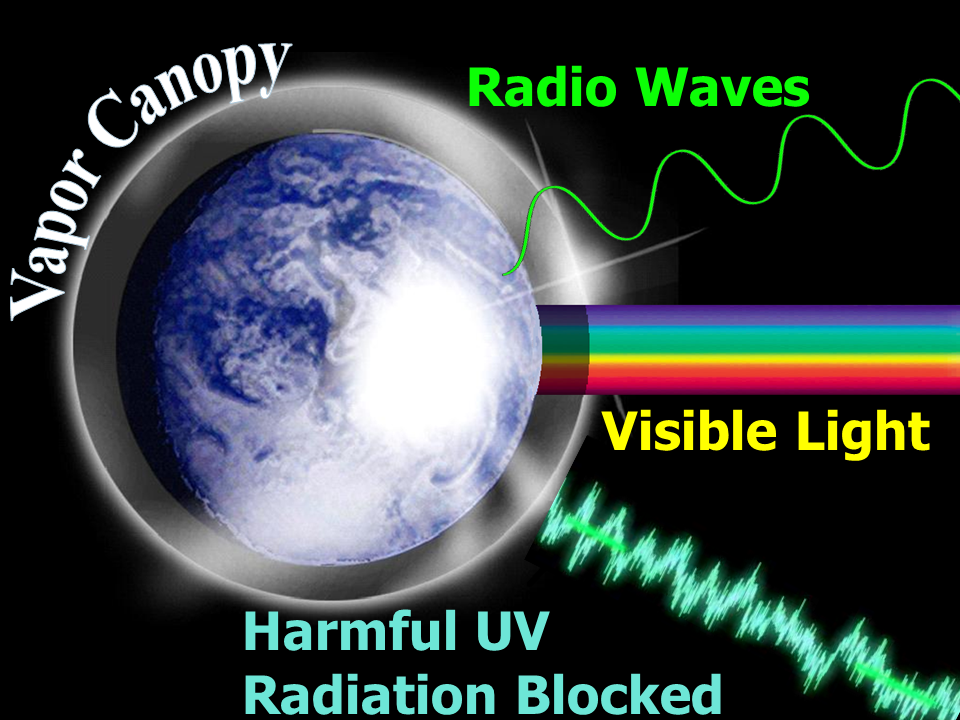
The Book of Genesis records that the Lord had not caused it to rain before He created humankind. It says that He created “waters above” the earth. Likewise, many young-earth creationists of the late 20th century did not believe that it rained before the Flood. Instead, water in the atmosphere was caught up in a gaseous or ice canopy surrounding the entire globe. This canopy dissipated when the Flood began, producing the 40 days and 40 nights of rain. Researchers discovered, however, that a canopy thick enough to hold the amount of water required to completely submerge the earth would make conditions too hot for life to survive.
Subsequent research of biblical evidence found the canopy model wanting. One problem is that the psalmist makes reference to “waters above” (Psalm 148). If these “waters above” were a vapor/ice canopy that collapsed during the Flood, why was it still around in the post-Flood era? Moreover, if an ice canopy existed, it would block the view of the stars meant for “signs and seasons.” This and other lines of biblical evidence caused most creation scientists to steer clear of the canopy model.13
Birds and Dinosaurs
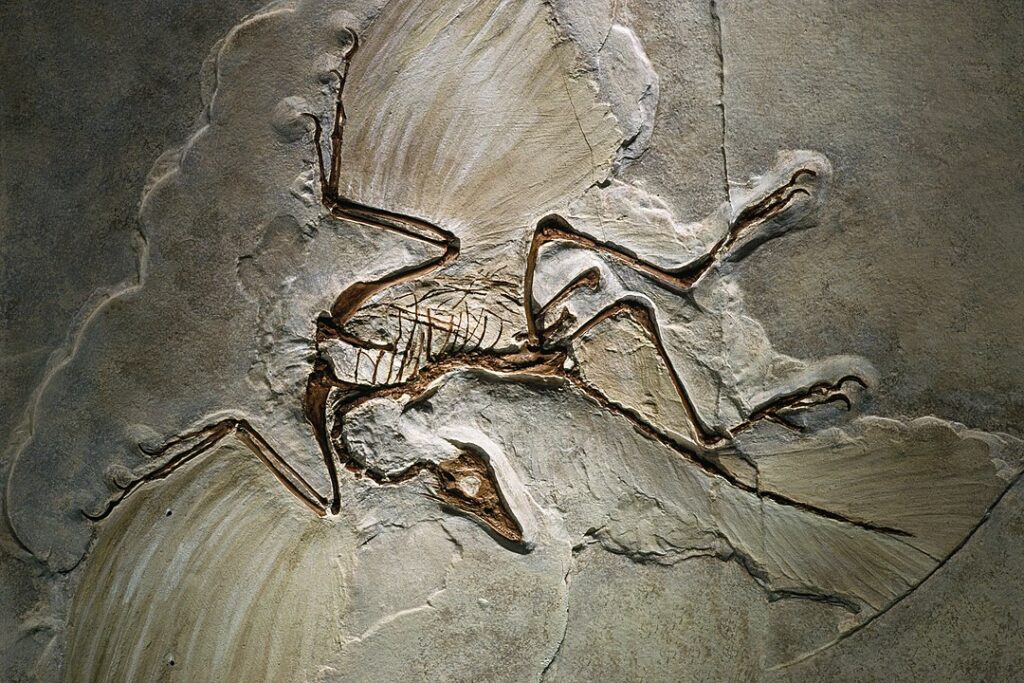
The Bible records the creation of birds on Day 5 of Creation Week. Dinosaurs are land animals, created on Day 6. This evidence from Scripture suggests that God created birds and dinosaurs independently from each other. However, most paleontologists believe not only that dinosaurs predate birds, but that birds evolved from dinosaurs. This is based on the ever-increasing fossil discoveries of creatures, from Archaeopteryx to Velociraptor, that appear to be intermediate between traditional birds and traditional dinosaurs. Many of them even have feathers, a wishbone, air sacs, and hundreds of other features we use to characterize “birds” today! Some argue that, regarding their anatomy, these creatures display a continuum from dinosaurs to birds with no breaks.14 This is a stark area of conflict between Scripture and science.
To answer questions like these, creation scientists turn to baraminology, the study of created kinds. Statistical analyses have been performed on birds and dinosaurs. They did not observe an anatomical continuum connecting dinosaurs to birds. Instead, they observed that there are various groups within both dinosaurs and modern birds that probably equate to created kinds. Even the “dino-birds” did not link the two groups, but instead formed at least eight created kinds of their own.15
Desert Deposits That Weren’t
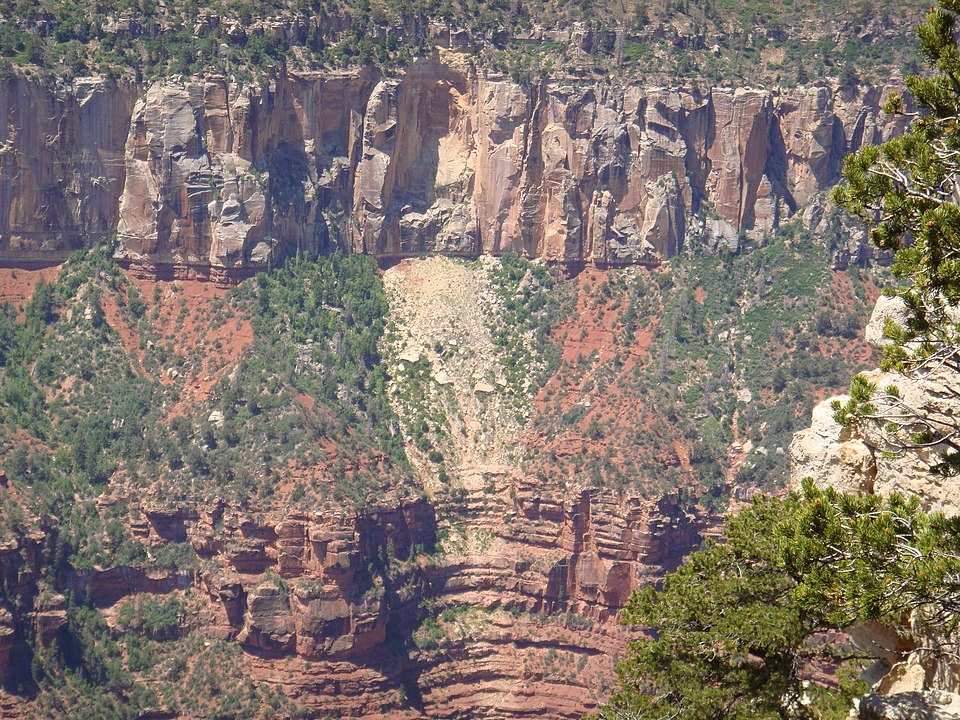
The Book of Genesis records a catastrophic, worldwide Flood that destroyed the dry land surface in the days of Noah. Such an event ought to have left evidence behind in the geologic record. As it happens, the consensus among young-earth geologists is that the global Flood of Noah’s day laid down most of the thick packages of sedimentary rock layers that blanket our continents around the world. What we would not expect to find in these deposits are layers that can only be formed in dry, arid conditions, like desert sand deposits. For this reason, critics of Flood geology argue that the Coconino Sandstone disproves the Flood. Geologists have long acknowledged the Coconino as a desert deposit. They believe it formed in much the same environment as the Sahara of North Africa today.
Instead of simply accepting this claim and rejecting Flood geology as a whole, young-earth geologists conducted their own investigation of the Coconino Sandstone. They found that many of the features that “clearly” demarcated it as a desert deposit were in fact not present. On the contrary, this evidence is much more consistent with an underwater formation.16
Conclusion – So What is Creation Science?
Creation science is the study of the physical world God created in the light of what He has revealed to us in His Word. It is every bit as real a field of inquiry as any other branch of science. Creation science is productive and fruitful. It allows us to ask questions conventional scientists would never dream of asking. We look for things and use techniques others would not think of. And yet, our efforts often reward us. With every discovery we make, God assures our confidence in Him. The more we seek to glorify Him in the process, the more we learn about Him.
And yet, creation science is more than simply research. It is more than simply winning arguments or debates. Arguably one of the greatest scientists of all time, Johann Kepler, stated that scientific research was thinking God’s thoughts after Him. God has created an incredible world, and the history of that world is a dynamic one. By studying the world God made, through the lenses of His Word, we can glorify its Creator.
Learn More About Creation Science
Footnotes
- Popper, Karl (4 November 2005). The Logic of Scientific Discovery (2nd ed.). London: Routledge. doi:10.4324/9780203994627. ISBN 9780203994627. ↩︎
- Stewart, D. (no date). “Did the Sun actually stand still in Joshua’s long day?” Blue Letter Bible. Available at: https://www.blueletterbible.org/faq/don_stewart/don_stewart_625.cfm (Accessed: May 12, 2023). ↩︎
- T. S. Kuhn, The Structure of Scientific Revolutions (1962), p. 35-42. ↩︎
- Kuhn, Thomas S. “The Structure of Scientific Revolution,” The Structure of Scientific Revolutions, 3rd edition. Chicago: University of Chicago Press, 1996. page 10. ↩︎
- Gould, S. J. (2002). The structure of evolutionary theory. Harvard university press. pp. 1309. ↩︎
- Blackburn, S (2005). The Oxford Dictionary of Philosophy. Oxford paperbacks. Oxford University Press. pp. 331–32. ↩︎
- Brand, L.R., Faith, Reason and Earth History, Andrews University Press, Berrien Springs, MI, 1997. ↩︎
- Jason Lisle, Ph.D. 2014. “The Biblical Basis for Peer Review.” Acts & Facts. 43 (7). ↩︎
- Wieland, C., Ham, K., and Sarfati, J. 2002. “Maintaining Creationist Integrity: A response to Kent Hovind.” Creation Ministries International. ↩︎
- “DEBATE | Is There Reasonable Evidence for Evolution? – Dr. Dino (Kent Hovind) vs. Ian Chen,” uploaded by Standing For Truth, 11 May 2022, https://youtu.be/P8sZotWhaZ8?t=3311. ↩︎
- 1999. “Has the Ark of the Covenant been found? And Noah’s Ark? Pharaoh’s drowned army? What about the Garden of Eden?” Creation 21(2):10-14. ↩︎
- Smith, Henry B. 2022. “Joshua’s Lost Conquest.” Associates for Biblical Research Website. ↩︎
- Hodge, B. “What Is the State of the Water Vapor Canopy Model?” The New Answers Book 4, edited by Ken Ham, Master Books, 2013. ↩︎
- Brusatte, S. L., Lloyd, G. T., Wang, S. C., & Norell, M. A. (2014). “Gradual assembly of avian body plan culminated in rapid rates of evolution across the dinosaur-bird transition.” Current Biology, 24(20), 2386-2392. ↩︎
- McLain, M.A., M. Petrone, and M. Speights. 2018. “Feathered dinosaurs reconsidered: New insights from baraminology and ethnotaxonomy.” In Proceedings of the Eighth International Conference on Creationism, ed. J.H. Whitmore, pp. 472–515. Pittsburgh, Pennsylvania: Creation Science Fellowship. ↩︎
- Whitmore, J.H., and P.A. Garner. 2018. “The Coconino Sandstone (Permian, Arizona, USA): Implications for the origin of ancient cross-bedded Sandstones.” In Proceedings of the Eighth International Conference on Creationism, ed. J.H. Whitmore, pp. 581–627. Pittsburgh, Pennsylvania: Creation Science Fellowship. ↩︎

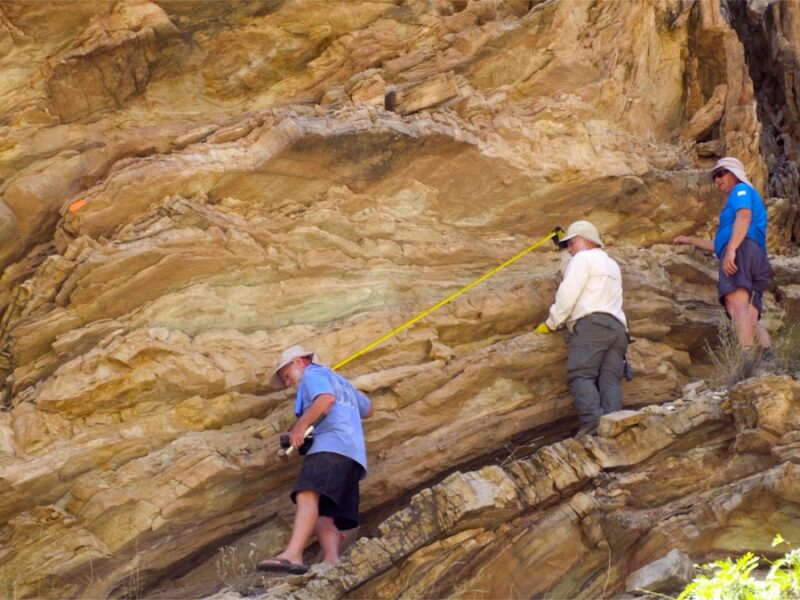



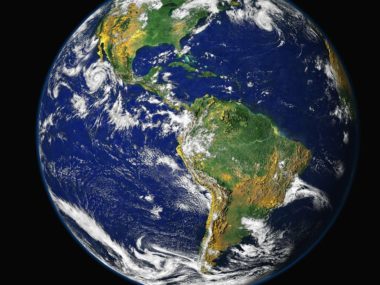






Once again, Christian Ryan has written an immensely useful article. Yet another article that will be my go-to reference when asked this question. Love the paradigm shift example.